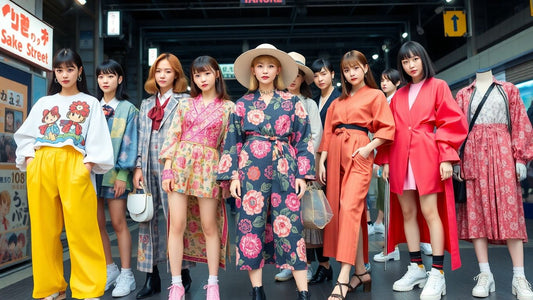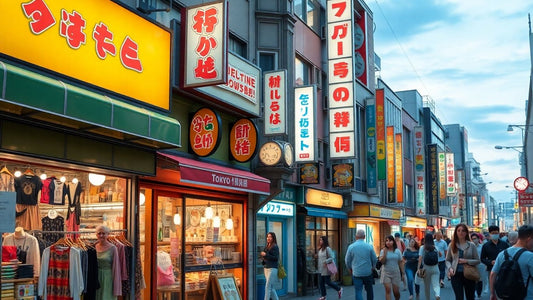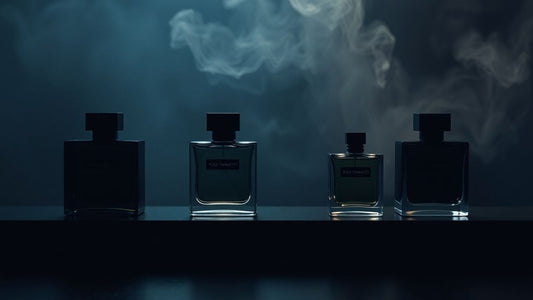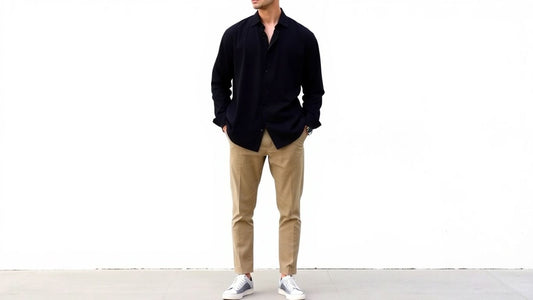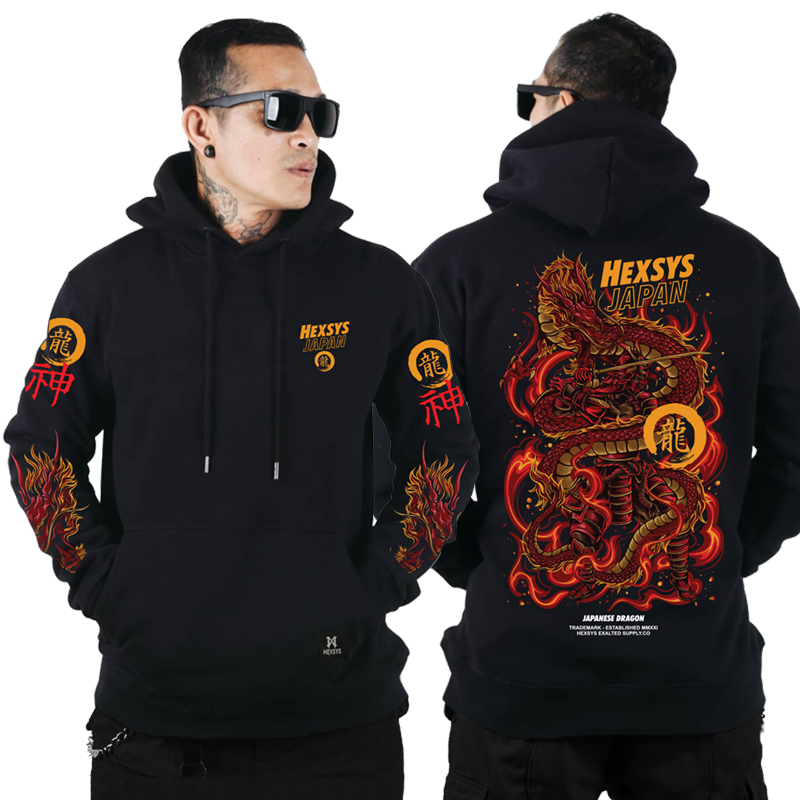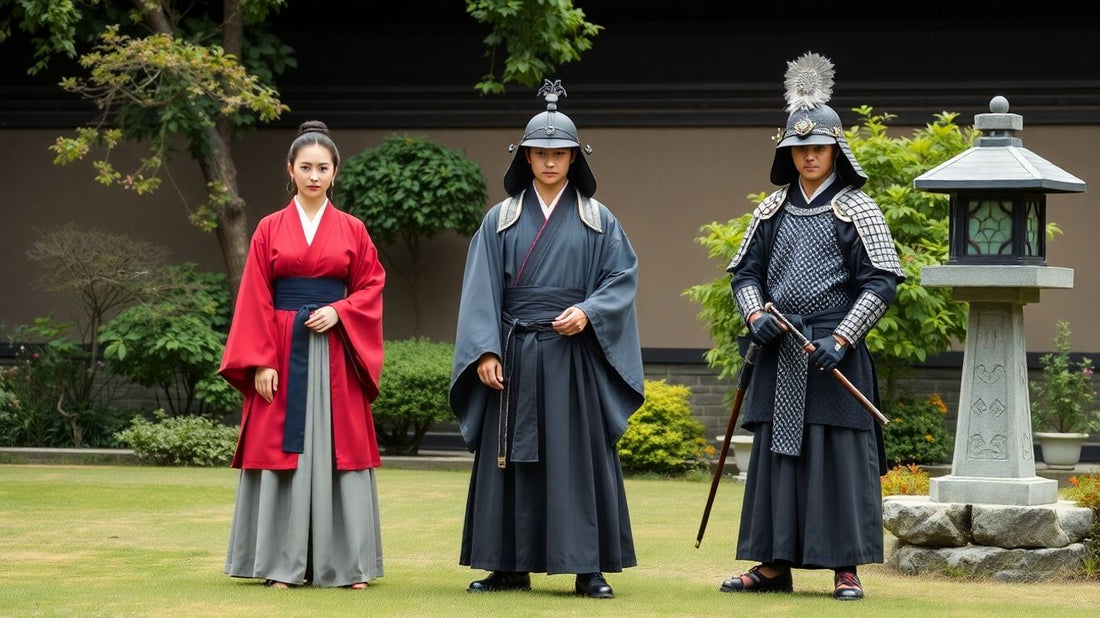
Exploring the Evolution and Symbolism of Medieval Japan Clothing
When you think about medieval Japan clothing, it's easy to picture colorful kimonos or samurai armor, but there's a lot more to it. Over the centuries, what people wore in Japan was shaped by outside influences, strict social rules, and even practicality. Sometimes, what you wore told everyone who you were and what you did. Today, these styles still pop up at festivals, in pop culture, and even in heated debates about cultural appropriation. Let's take a look at how Japanese clothing changed over time, what it meant, and why it still matters.
Key Takeaways
- Medieval Japan clothing was heavily influenced by Chinese styles before evolving into its own unique look.
- Clothing often showed your social rank—nobles wore layers and bright colors, while commoners had to stick to plain styles.
- Women's clothes were designed to hide the body, showing modesty and status, especially at court.
- The rise of the samurai led to simpler, more practical clothes, but court traditions still hung on for important events.
- Modern Japanese fashion still nods to these old styles, and the kimono remains a symbol both in Japan and around the world.
Origins and Influences of Medieval Japan Clothing

The clothing of medieval Japan didn’t just pop up out of nowhere. It’s a wild mix of homegrown designs and influences from neighboring cultures, especially China. Over the centuries, folks in Japan adapted what they liked and tossed out what didn’t fit, leaving us with a style that feels unique but also oddly familiar if you squint.
Kofun Period Garments and Chinese Influence
- The earliest clear evidence of Japanese clothing comes from clay haniwa sculptures from the Kofun period (3rd to 6th centuries CE), giving us a small window into what people might have worn.
- Men’s outfits usually featured ballooning trousers tied above the calf, handy for moving around, while women’s clothing leaned towards tubular sleeves and wrap skirts known as mo.
- The right side wrapping over the left was a purely Japanese touch, splitting from how the Chinese did it.
- Even during this early stage, we see echoes of Chinese Han dynasty fashion, especially among the upper ranks and priest-kings. Silk was insanely prized, but wasn’t local at first—Japan had to lean on imports.
Main points:
- Right-over-left wrap, unlike China
- Differences in gender attire (ballooning trousers vs. skirts)
- First appearance of some class-divided elements in clothing
Adoption of Tang Dynasty Styles
Japanese rulers craved sophistication and saw China as the place to get it. Waves of diplomats and scholars came back from the Tang court with new ideas and clothes—sleeves got wider, collars changed, fabrics became fancier, and colors and patterns grew more complex.
| Chinese Element | Japanese Adaptation |
|---|---|
| Silk Robes | Imported, then imitated |
| Wide Sleeves | Seen in courtly dress |
| V-neck Collars | Changed to round or overlapped |
| Decorative Motifs | Adapted to local taste |
- Imported garments from China were tweaked for comfort and climate—very practical.
- By the Nara period, special ceremonial garments even show a mix of collar shapes and various techniques like dyeing, weaving, and embroidery.
- Chinese fashions were first worn at court and filtered down (slowly) to the merchant and artisan classes.
Clothing was a kind of silent contest, with the Japanese court eager to show off the latest trends from China, while gradually adding a local twist until the old foreign roots were almost invisible.
Evolution Toward National Dress
Eventually, Japan decided to develop styles all their own. During the Heian period, the country stopped sending missions to China, and suddenly, people at court had to build a national style off of what already existed. This led to what’s called kokufū (national) culture, where real Japanese aesthetic values took the front seat.
- Chinese elements didn’t vanish; they were adapted. For example, the tube-sleeved chun ju jacket was abandoned, but the wrap-front robe stuck around in modified form.
- The mo skirt changed from a full skirt to a trailing formality only worn for big occasions. Trousers got longer and began trailing behind, as if the longer the garment, the higher the rank.
- Patterns, layers, and accessories began speaking more about a person’s position in society than their loyalty to the "latest thing" from China.
Over time, what started as copycatting became distinctively Japanese, setting the base for famous styles like the kimono’s Heian roots that would define later centuries. Clothes went from being just functional or copied, to being a quiet but powerful marker of what it meant to be Japanese.
Symbolism and Social Hierarchy in Japanese Attire

Medieval Japanese clothing wasn't just about looking good or staying warm. What people wore was a loud signal of who they were and where they stood in society. Everything from fabric type to sleeve length sent a message. It all but drew invisible lines between the elite and everyone else, right down to the colors folks were allowed to be seen in. Let’s break down the layers of meaning stitched into every garment.
Dress as a Mark of Rank and Status
- Silk robes, often bright and loaded with patterns, were reserved for nobles and the very rich. Most commoners wore plain, undyed fabrics.
- Special details, like long trailing sleeves or expensive threads and dyes, announced someone’s place at court or their proximity to power.
- Even shoes and aprons had their own social codes; certain styles never made it outside elite circles.
| Social Class | Typical Fabrics | Allowed Colors/Patterns |
|---|---|---|
| Imperial Court | Silk, imported brocade | Multiple, vivid shades; elaborate embroidery |
| Samurai | Silk, linen | Subtle, select patterns |
| Merchants/Artisans | Hemp, linen | Simple stripes or neutral tones |
| Peasants | Hemp, bast fiber | Undyed, plain |
Clothes weren't just worn. They were statements, as clear as a name badge at an office. Maybe even clearer.
Women's Modesty and Hidden Body Ideals
- High-status women were expected to cover themselves from collarbone to ankles—sometimes with so many layers their hands vanished inside their sleeves.
- Long sleeves shielded the wrists and fingers, and women often used folding fans to hide their faces or gestures from strangers.
- The belief was that the less skin shown, the higher your rank. This meant more than style—it was about staying protected, even spiritually, from "evil forces."
Restrictions for Commoners and Class Divides
- Laws specifically outlined what lower classes could or couldn’t wear. That meant color bans and limits on using things like silk or fancy designs.
- Artisans and merchants had a bit more freedom, but peasants’ clothes stayed functional and simple.
- Sometimes, these rules changed with the times, but the lines between classes stayed mostly visible—literally—on everyone’s backs.
- Social differences were not just on paper but visible on every street corner, in every gathering.
- This visual system made sure everyone knew their role—no introductions needed.
- Even today, traces of these old rules stick around in the way some formal garments are worn.
Heian Period Elegance: Layers, Color, and Status
Fashion in Japan shifted in a big way during the Heian period. This was when clothes started to really show off what class a person belonged to, instead of everyone just copying China. The wrapping and layering of robes became popular, mostly among the rich and powerful.
Development of Kokufū Culture
By the Heian period, Japanese people weren't looking to China for style inspiration anymore. Instead, they built what's called kokufū culture, basically their own homegrown way of doing things—especially with fashion.
- Straight-line-cut robes made it super easy to adapt the same outfit for different seasons by adding or removing layers.
- Round-necked jackets and certain Chinese-style clothes faded out, replaced by designs that were unique to Japan.
- The focus turned to refinement, subtlety, and a certain kind of elegance that wasn't seen before.
The changes meant that upper-class Japanese people could express their own identities, not just borrow from somewhere else.
The Jūni-hitoe and Courtly Dress
One of the most famous outfits from this time is the jūni-hitoe—the twelve-layer robe. Only elite women at court could wear it, making it a clear badge of status and privilege.
Here's a breakdown of the jūni-hitoe:
- Multiple silk layers, each with a precise color and fabric, often peeking out at the sleeves and edges
- The inner layer, called the kosode, was actually the ancestor of the kimono we know today
- Heavily regulated and super expensive—commoners couldn't even attempt it
| Layer | Japanese Term | Purpose |
|---|---|---|
| Underwear | Kosode | Base, closest to skin |
| Middle Robes | Uchigi | Warmth & bulk |
| Main Kimono | Uwagi | Decorative outer layer |
| Overcoat | Karaginu | Court dignity |
| Long Train | Mo | Symbolic, dressy touch |
Every layer mattered; the wrong color or order was a big faux pas.
Motifs, Colors, and Social Meaning
Clothing wasn't just about keeping warm or looking good. It was soaked in symbols and rules. If you wore the wrong color, pattern, or combination, you could offend someone important or hint you didn’t know your place.
- Pastel shades and certain seasonal colors were tied to the calendar and important ceremonies.
- Patterns like cranes, plum blossoms, and water streams showed off virtues or good luck wishes.
- Richer, more complicated fabrics and dyes were saved for the highest ranks and special occasions.
Even color pairings were a secret code; what you wore could tell as much about you as the words you used.
The Heian era marked a real turning point. Clothes became more than just coverings—they were a language of their own, packed with hints about a person's identity, rank, and taste.
Samurai Influence and Practicality in Kamakura Clothing
The Kamakura period marked a sharp turn in Japanese fashion, shaped mostly by the rise of the samurai. Gone were the days of excessive layers and flowing fabrics; this was an era that valued function over flair.
Simplification of Dress for the Warrior Class
- The samurai needed clothing they could move in, so formal attire saw a dramatic cutback in layers and flourishes.
- Kosode (short-sleeved robes) paired with hakama (pleated trousers) became the top choice for both men and women in the warrior class.
- Practicality ruled. Military men chose garments that wouldn’t slow them down—no trailing sleeves, nothing that could be grabbed in a skirmish.
- Upper-class women, although inspired by the courtly look, compressed their dress into fewer layers. A white kosode with several brocade underlayers became the new high-status outfit, just enough to show elegance without excess.
Retention and Reform of Court Attire
- Not everyone was ready to toss out old traditions. While samurai clothes were pared down, court attire clung to some Heian customs—especially for ceremonial occasions.
- The red hakama pants and layered kosode stuck around for formal events among the elite, as a nod to taste and etiquette.
- Still, these items too got simplified. Women’s layers shrunk, and men’s hakama grew longer but remained less decorative. Even the color palettes narrowed, with more subdued hues favored for everyday wear.
Distinctive Garments for Upper and Lower Classes
Here's a quick look at how clothing marked social lines during the Kamakura period:
| Social Group | Typical Outfit | Main Features |
|---|---|---|
| Samurai Men | Kosode & Hakama | Simple, practical, dark hues |
| Upper-Class Women | White Kosode with Brocade Layers | 5 layers, elegant but minimal |
| Lower-Class Women | Kosode, Half-skirts | Few layers, plain fabric |
| Commoners | Short Kosode, Hakama (if any) | Coarse fabric, functional |
- Social status became readable at a glance. The samurai’s plain but sturdy style set them apart, while court members hung on to their old distinction with subtle tweaks.
- Most people couldn’t afford any layers at all and kept to the simplest pieces possible—sometimes just a belted kosode.
- Restrictions existed too: bright colors or certain fabrics were reserved for the upper class only, keeping boundaries clear.
The changes during the Kamakura period weren’t just about comfort; they showed who held power and what values were coming to the forefront. Where once beauty and luxury signaled influence, now practicality and discipline spoke just as loudly.
Textiles, Craftsmanship, and Decorative Techniques
Medieval Japan's clothing traditions were seriously intertwined with the nation’s attitude toward craftsmanship, resourcefulness, and art. Everyday people and aristocrats alike put a lot of care into the fabrics they wore, both for practical reasons and to share something about themselves or their place in society.
Fabric Choices and Social Significance
When it comes to fabric, status mattered a lot. Silk was reserved for the elite, like court officials and wealthier samurai. Commoners mostly wore cotton, hemp, or ramie, since these were easier to get and much more affordable.
Textiles did more than just cover the body—they sent a message about class, taste, and even local geography.
| Material | Wearer | Notes |
|---|---|---|
| Silk | Aristocracy | Soft, shiny, and expensive |
| Cotton | Peasants, townspeople | Durable, more affordable |
| Hemp | Rural communities | Good for hot climates |
| Ramie | Lower ranks | Strong and lightweight |
If you ever check out Japanese craft traditions, you'll see how these fabric choices were a real reflection of what people valued and had access to in their daily lives.
Artistic Motifs and Symbolic Imagery
Patterns and symbols did lots of the talking. Masculine or bold motifs such as cranes, waves, or dragons symbolized long life, strength, or protection. Flowers, birds, and butterflies often showed up on women’s clothing to represent beauty, elegance, or changes in the seasons.
- Popular motifs included:
- Pine trees (for resilience and longevity)
- Plum blossoms (for perseverance and renewal)
- Hexagonal patterns (for good fortune)
- Stylized family crests (or kamon), echoing clan loyalty
These patterns might be woven directly into the fabric or applied later with dyeing or embroidery. They were so much more than decoration—they were a kind of silent language everyone understood.
Embroidery, Dyeing, and Ornamentation
Decoration in medieval Japanese clothing was all about technique and discipline. Some approaches:
- Shibori: This method involved tying, folding, or compressing fabric before dyeing, resulting in vibrant, repeating patterns.
- Kasuri: Threads were carefully pre-dyed before weaving, producing signature blurry, almost watercolor-like fabric images.
- Katazome: This used stencils and a rice paste to block out dye, letting artisans control where color appeared on the cloth.
- Sakiori: An ingenious recycling approach in harsh rural areas—old cloth was shredded then rewoven into new, tough fabrics.
- Boro and sashiko: These mending techniques—part necessity, part art—extended the life of old clothes, often becoming as beautiful as new fabric.
There’s something really special about how every scrap was used—nothing wasted, everything turned into something useful or beautiful, a feature that still inspires Japanese decorative techniques today.
All these skills came together in medieval wardrobes. Some clothing was simple and rugged for work, while ornate robes showed off intricate techniques and expensive materials. Underneath it all, Japanese medieval clothing told a story—not just about style, but about the lives, values, and resourcefulness of the people who wore them.
The Rise of the Kimono and Shifting Silhouettes
Straight-Line Cut Method and Adaptability
When I think about how the kimono evolved, the biggest game changer was definitely the straight-line cut method. Unlike earlier, fitted garments, this style meant all the fabric got cut into straight strips. This made construction a lot easier, allowed for flexible sizing, and meant anyone could pull it off—no matter their body shape. It also made kimonos a year-round staple: you could pile on thicker fabrics for winter, or throw on something lighter come summertime. Modular, practical, and honestly pretty clever.
Here’s why it stuck around:
- Fast and easy to make versus earlier tailored clothes
- Fit broadly, so there’s less waste in making or wearing them
- Layering was a snap, letting people adjust to the weather
The straight-line method wasn’t just about fashion—it was about practicality and letting folks personalize their look based on the season or their own needs.
The Kosode as Everyday and Formal Wear
The kosode, which literally means “small sleeves,” started out as simple underwear. Eventually, it became outerwear and then the mainstay for both women and men. What started out as a personal garment got fancier and more visible as time passed. Kosodes began to show up with bold colors, patterns, and eventually, the motifs you see on modern kimono.
Some key points about the kosode:
- At first, only the upper classes wore decorated kosodes, while everyone else kept it plain
- Became versatile enough for daily wear, ceremonies, and later, samurai
- Showed off your taste and maybe even your status, all in one go
Introduction of the Obi Sash
So, there’s a funny thing about keeping a kosode closed: ties are handy, but they weren’t always the big, bold obi we see today. The obi, basically a wide sash, came along as a way to secure the kosode without all those fiddly little strings. Over time, the obi got wider, fancier, and turned into a fashion statement all by itself.
Here’s a quick breakdown of how the obi changed things:
| Era | Obi Type | Purpose |
|---|---|---|
| Early Medieval | Narrow sash | Basic fastening |
| Muromachi Period | Wider, decorative | Express status, secure kimono |
| Edo Period | Highly ornate | Stylish focus, even larger in scale |
- The obi marked a dividing line between old-style layering and the more modern silhouette
- Decoration, embroidery, and ways of tying the obi said a lot about the person
- Eventually, the way a woman’s obi was tied became linked to age and social cues
Today’s kimono—with its tailored layers, pops of color, and statement obi—owes a lot to these centuries of trial, error, and a stubborn refusal to settle for stuffy old styles.
Medieval Japan Clothing and Modern Cultural Impact
Japanese clothing has found a surprising afterlife in the modern world, way beyond shrine visits and special occasions. The stuff that started as marks of social order and aesthetics on the islands is now everywhere—weddings, graduation pictures, runway shows, and street fashion. That mix of the old and new says a lot about how Japan balances its history with present-day life.
Traditional Attire in Contemporary Japan
It's rare now to see traditional Japanese dress in everyday life, but that's part of what makes it special. For most people in Japan today, traditional clothes like the kimono get dusted off mainly on big days—weddings, coming-of-age ceremonies, or summer festivals. There’s something deliberate about when and how folks choose traditional attire now:
- Families might pull out kimonos for formal events, like New Year's visits to shrines or for family portraits.
- At festivals, yukata (lighter casual robes) are popular, especially among the younger crowd.
- Some professionals—think geisha, sumo wrestlers, or tea masters—stick to traditional styles as part of their work.
While the kimono used to be everyday wear, today it acts more as a cultural badge, connecting people to tradition as fashions keep shifting around them.
Western Fascination and Japonisme
Japanese clothing crossed boundaries in the 19th century, when Europe and America started craving all things Japanese. This craze, known as Japonisme, led to designers in the West pulling inspiration from kimono, obi, and even woodblock prints. You see echoes of this fascination in everything from Paris fashion to Hollywood costumes, and even now, plenty of Western designers tip their hats to traditional silhouettes and motifs from Japan.
- Large, flowing sleeves and bold prints became popular in Western fashion.
- Some garments were made only for export and looked quite different from those worn in Japan.
- Stereotypes, like the mysterious 'geisha girl,' often grew out of misunderstandings or shallow influences during these cultural exchanges.
Cultural Perceptions and Appropriation Debates
With Japanese fashion so well known abroad, it’s led to ongoing debates about where inspiration ends and imitation begins. Some of the concerns involve:
- Use of traditional wear in advertising or costume without knowledge of its history.
- Western pop stars and designers sporting kimono-inspired looks divorced from cultural meaning.
- High-profile controversies, such as art museum exhibits or media events where people questioned whether it’s respectful to "borrow" these styles.
These conversations reflect bigger questions: What’s the right way to appreciate another culture’s traditions? Is it enough to admire the surface, or is deeper understanding important?
The way Japanese clothing lives on today—sometimes treasured and other times misunderstood—shows how history keeps shaping what we choose to wear and why. As the story of Japanese fashion keeps unfolding, both at home and abroad, its roots in medieval culture keep popping up in new and unexpected places.
Conclusion
Looking back at the clothing of medieval Japan, it's clear that what people wore was about more than just keeping warm or following trends. Clothes showed who you were, where you stood in society, and even what you believed. From the early days of simple, practical garments to the layered elegance of the Heian court, and then to the more functional styles of the samurai era, Japanese fashion kept changing with the times. Symbols, colors, and fabrics all had meaning, and even today, you can see echoes of these old styles in modern Japanese culture. While most folks now wear Western clothes day-to-day, traditional outfits like the kimono still pop up at festivals and special events, reminding everyone of the country’s rich history. It’s pretty amazing how much a piece of clothing can say about a whole culture, and Japan’s story is stitched right into every fold and seam.
Frequently Asked Questions
What kinds of clothes did people wear in medieval Japan?
People in medieval Japan wore different clothes depending on their social class. Nobles and samurai wore fancy robes and layered outfits, while commoners wore simpler, more practical clothing. The kimono, with its straight lines and wide sleeves, became the most common traditional clothing.
How did Chinese culture influence Japanese clothing?
Early Japanese clothing was heavily influenced by China, especially during the Kofun and Asuka periods. Japanese people adopted Chinese styles like overlapping robes and certain fabrics. Over time, Japan developed its own unique styles, mixing Chinese ideas with local traditions.
What did clothing say about someone's social status in medieval Japan?
Clothing in medieval Japan showed a person's rank and status. Rich and powerful people wore many layers, bright colors, and expensive fabrics. Commoners had rules about what they could wear and usually wore plain, simple clothes. The more covered and decorated your clothes were, the higher your status.
Why did women in medieval Japan wear so many layers?
Women wore many layers, especially at court, to show elegance and status. The layers also followed the idea that the body should be hidden for modesty. The famous jūni-hitoe, or twelve-layered robe, was only for high-ranking women and showed off beautiful colors and patterns.
How did the samurai change Japanese fashion?
When the samurai became powerful, clothing became simpler and more practical. Samurai needed to move easily, so they wore fewer layers and chose clothes that were easy to wear and fight in. Still, they kept some traditions from the court, especially for special events.
Is traditional Japanese clothing still worn today?
Today, most people in Japan wear Western-style clothes for everyday life. Traditional clothing, like the kimono or yukata, is usually worn for ceremonies, festivals, or by people in certain jobs, like geisha or sumo wrestlers. Traditional styles are also popular around the world and inspire many modern fashions.
